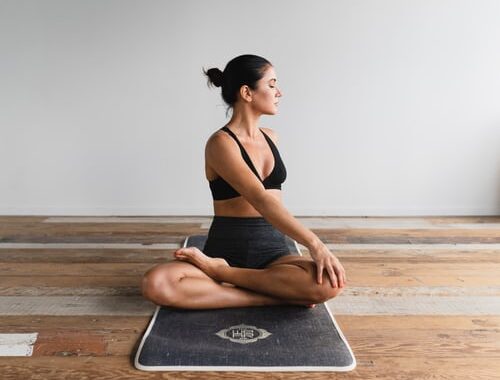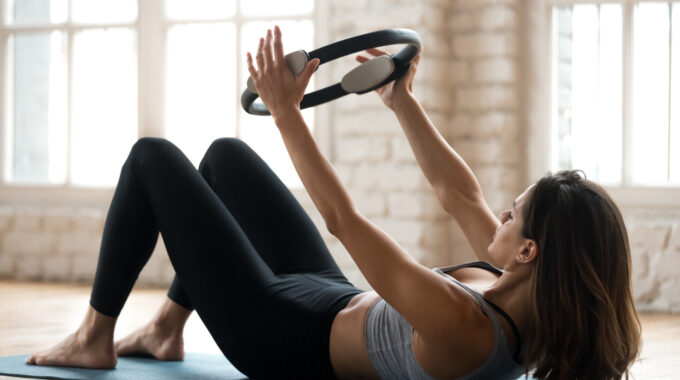Pilates for Back Pain: Alleviate and Prevent with Core Strength, Flexibility, and Posture Discover the…

Pilates, Yoga and the Pelvic Floor
Pilates, Yoga and the Pelvic Floor (by Lynsey Kourentis)
Have you ever wondered what the role of the pelvic floor actually is?
There is still a reluctance to talk about the pelvic floor, (I mean really talk about it). Where it is, if men have one, if men can be affected (they do and they can), what the role of the pelvic floor is and how it should function optimally. Also, what happens when there is dysfunction, and how the lack of strength and function can impact the rest of the body, (physically as well as emotionally) and what can be done to improve its strength and function.
Anatomically, the pelvic floor is a hammock like sling of muscles and fascial tissue. It attaches and stretches from the coccyx (tailbone) to the pubic bone, and side to side to the ischial tuberosities (sit bones). It quite literally forms the floor of the pelvis. These muscles support the internal organs of the pelvis, the bladder, the bowel and the uterus.
This layer of muscles has to have enough ‘give’ to absorb force, shock or impact when you cough, jump, laugh, but also enough strength to support the pelvic organs. A happy, fully functional pelvic floor will give you full control over your bladder and bowel, prevent prolapse, provide you with a strong core, less pain in other areas of the body such as low back pain, and is also important for sexual function.
The pelvic floor and the core co-contract, so when one engages as does the other and (ideally) works in sync with the diaphragm, which is why the correct cueing of the inhale and exhale during movement is so key during Pilates, Yoga and any other forms of exercise. When we inhale the diaphragm moves down and the pelvic floor relaxes and descends. As we exhale the diaphragm moves up and the pelvic floor ascends, increasing support and stability of the bladder and bowel, the core also engages simultaneously.
If the diaphragm is moving well and the individual has a good 360 degree breathing pattern, the pelvic floor and core will engage. A shallow breathing or paradoxical breathing pattern, a lack of rib mobility, posture and holding too much tension, will have an impact on how well the pelvic floor and core engages.
The pelvic floor is no different from any other muscle. In order to contract, it has to first fully lengthen. We couldn’t keep the arm in a bicep curl and expect it to become stronger, eventually it will fatigue; so we do need to learn the difference between relaxing and contracting the pelvic floor just like any other muscle. Abdominal gripping and butt clenching will also deregulate a functional pelvic floor as the body will always try to compensate for areas where there is lack of strength. Our bodies prefer balanced muscles!
Physical symptoms associated with a weakened pelvic floor include: leaking urine with coughing, sneezing, running or laughing (stress incontinence), urge incontinence (when urine leaks when you feel a sudden, intense urge to pee), sensation of a heaviness or dragging feeling, pelvic organ prolapse, back pain, hip pain, constipation or painful intercourse.
You may not currently be experiencing physical symptoms but having this awareness will keep your core and pelvic floor in optimal health, perhaps avoiding potential issues in the future.
In our Pilates and Yoga classes at Reform you will find a strong focus on utilising the breath in conjunction with core and pelvic floor engagement most efficiently in order to get the most out of each exercise. Our instructors are, of course, willing to help on an individual basis if you have specific questions, its never too late to address any issues!
Our pelvic floor workshop is coming soon! Contact us to be added to the interest list.
To book onto a yoga or Pilates class click here
You can find us just outside of Saffron Walden, in little chesterford. Not too far from Cambridge.
———————————————–
Author: Lynsey Kourentis
To find out more about our Wonderful Lynsey click HERE
To book a spot in one of Lynsey’s classes check out the schedule



This Post Has 0 Comments